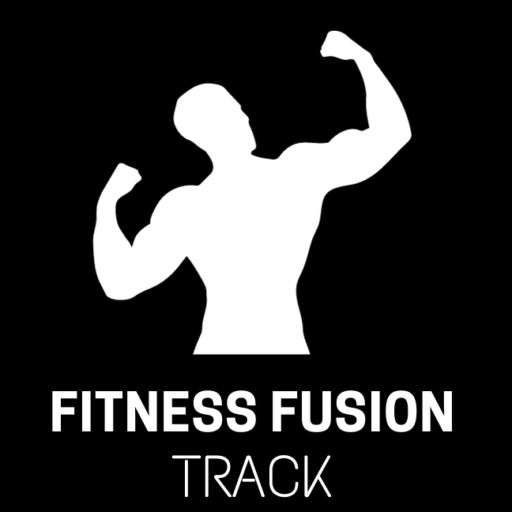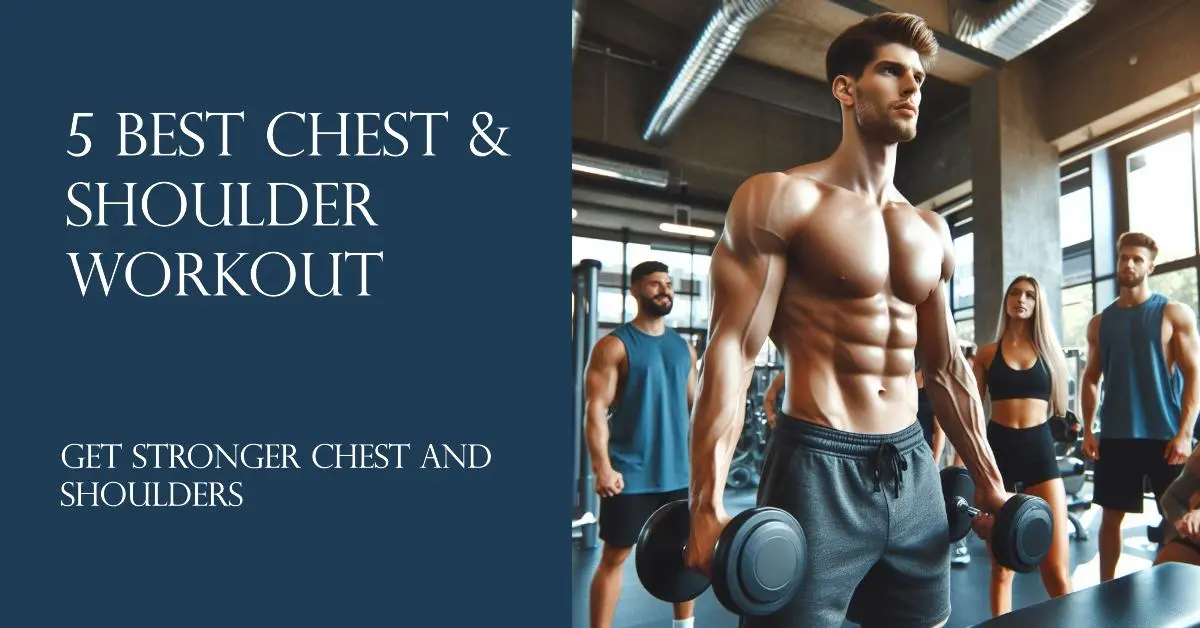When it comes to building a strong and sculpted upper body, focusing on the chest and shoulder muscles is key. These muscle groups not only contribute to overall upper body strength but also improve your posture and help create a balanced physique. Including the right combination of exercises can target these areas effectively. In this article, we’ll explore the best chest and shoulder workouts to help you achieve your fitness goals. From classic movies like push-ups to more advanced exercises like shoulder presses, these workouts will challenge and strengthen your muscles, leading to a more defined and powerful upper body.
Importance of Chest and Shoulder Workout
Combining chest and shoulder workouts can be highly beneficial for several reasons. Here are some key points detailing the importance of integrating these two muscle groups into your workout routine:
- Muscle Synergy: Both the chest and shoulder muscles are involved in different pushing movements. Training them together can enhance muscle synergy, leading to improved performance and efficiency in exercises like bench press, push-ups, and shoulder presses.
- Balanced Development: Working the chest and shoulders together helps ensure balanced development of these muscle groups. Neglecting one over the other can lead to muscle imbalances, which may increase the risk of injury and affect overall aesthetics.
- Efficient Use of Time: Combining chest and shoulder exercises in the same workout session allows you to target multiple muscle groups in a single session, making your workouts more time-efficient.
- Improved Strength and Stability: Many shoulder exercises, such as overhead presses, engage the chest muscles to some extent. By combining these exercises with chest workouts, you can improve overall upper body strength and stability.
- Functional Strength: Training the chest and shoulders together can improve your functional strength, which is beneficial for everyday activities that involve pushing, lifting, and carrying objects.
- Variety and Interest: Combining different exercises for the chest and shoulders can add variety to your workouts, keeping them interesting and engaging over time.
- Cross-Training Effect: Engaging multiple muscle groups simultaneously can increase the intensity of your workouts and promote greater calorie burn, which can be beneficial for weight management and overall fitness.
Including a mix of chest and shoulder exercises into your workout routine can help you achieve well-rounded and balanced upper body development while maximizing the efficiency and effectiveness of your training sessions.
Best Chest and Shoulder Workouts
Bench Press Variations
The bench press is a classic chest exercise that also engages the shoulders. Variations such as the incline and decline bench press can target different areas of the chest and shoulders.
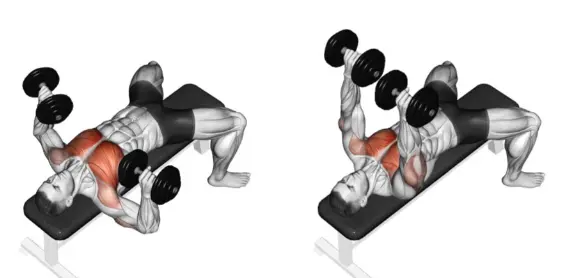
Push-up Variations
Push-ups are a versatile exercise that can be modified to target the chest and shoulders effectively. Variations like wide-grip push-ups and diamond push-ups can help isolate these muscle groups.
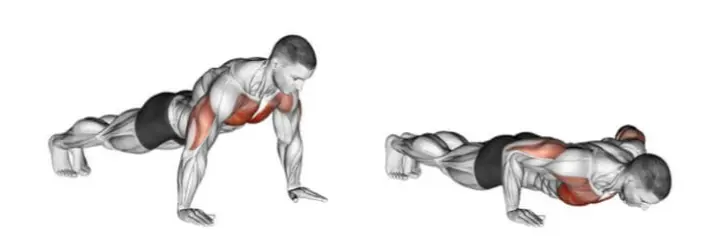
Shoulder Press Variations
Shoulder presses are excellent for targeting the deltoid muscles in the shoulders. Variations like the standing shoulder press and the Arnold press can help build strength and size in the shoulders.
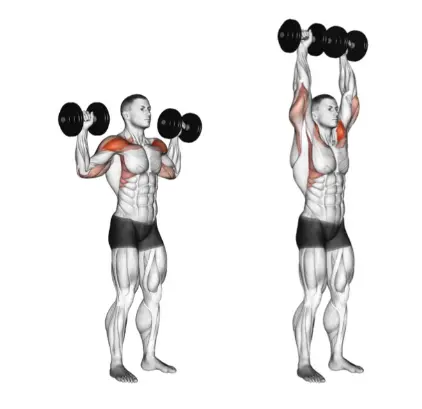
Lateral Raises
Lateral raises target the lateral deltoid muscles and help in achieving broader shoulders. This exercise can be done with dumbbells or resistance bands for added resistance.
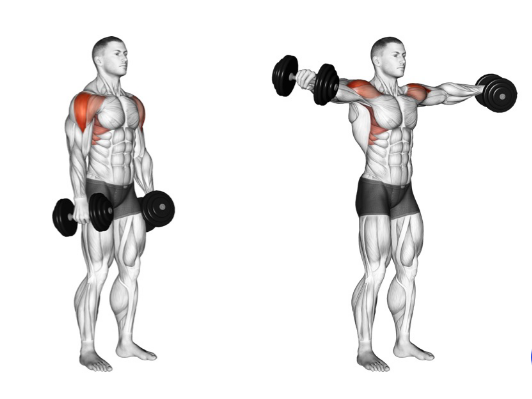
Front Raises
Front raises target the front deltoid muscles and help in improving shoulder definition. This exercise can be done with dumbbells or a barbell.
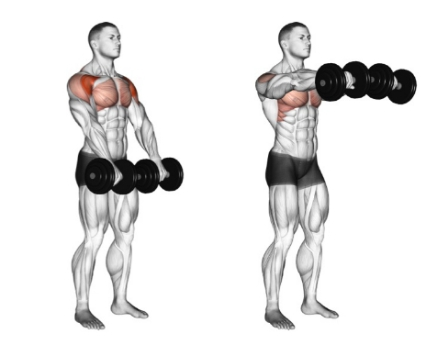
How to Include These Exercises Into Your Routine?
Including the best chest and shoulder workouts into your routine can enhance upper body strength and aesthetics. Begin with a warm-up to prepare your muscles. Start with the bench press, a compound exercise that targets both the chest and shoulders. Follow with dumbbell flyes to isolate the chest and build definition. The shoulder press, whether with dumbbells or a barbell, strengthens the deltoid muscles. Include lateral raises to target the side delts, and finish with bent-over lateral raises for the rear delts. Perform these exercises with proper form, gradually increasing weight and reps as you progress. Always cool down and stretch post-workout.
Tips for Maximizing the Effectiveness
To maximize the effectiveness of your chest and shoulder workouts, consider the following tips:
- Warm-Up Properly: Before starting your workout, warm up your chest and shoulder muscles with dynamic stretches and light cardio. This makes your blood flow more freely and gets your muscles ready for work.
- Mind-Muscle Connection: Focus on the muscles you are working. Contract your chest and shoulder muscles with each repetition to maximize muscle engagement and growth.
- Progressive Overload: Gradually increase the weight you lift to continuously challenge your muscles. Over time, this increases strength and muscle growth.
- Variety of Exercises: Include a variety of chest and shoulder exercises in your routine to target different muscle fibers and prevent plateauing. Examples include bench press, push-ups, dumbbell flyes for chests, shoulder press, lateral raises, and rear delt flyes for shoulders.
- Range of Motion: Perform exercises through a full range of motion to fully engage the muscles and promote flexibility. Avoid using momentum to lift weights, as this reduces muscle activation.
- Nutrition and Hydration: Maintain a balanced diet rich in protein and nutrients to support muscle growth and recovery. Stay hydrated before, during, and after workouts to optimize performance.
- Consistency: Consistency is key to seeing results. Stick to your workout routine and make adjustments as needed to continue progressing.
By following these tips, you can maximize the effectiveness of your chest and shoulder workouts and achieve your fitness goals.
Common Mistakes to Avoid
There are some common mistakes to avoid during chest and shoulder workouts:
- Using Incorrect Form: Proper form is crucial to avoid injury and effectively target the muscles. Make sure to maintain a controlled motion, avoiding swinging or jerking movements.
- Overarching the Lower Back: When performing exercises like bench presses or overhead presses, avoid arching your lower back excessively. This places unnecessary stress on the spine and may lead to injury. Hold your back in a neutral position and keep your core active.
- Neglecting Full Range of Motion: Partial repetitions limit muscle activation and growth potential. Aim to perform exercises through their full range of motion to effectively target the muscles and promote muscle development.
- Using Too Much Weight: Lifting weights that are too heavy can compromise form and increase the risk of injury. Choose a weight that allows you to complete the desired number of repetitions in proper form.
- Ignoring Muscle Imbalances: Focusing solely on chest or shoulder exercises without addressing muscle imbalances can lead to poor posture and an increased risk of injury. Include exercises that target opposing muscle groups to maintain balance and symmetry.
- Not Resting Sufficiently: Rest is essential for muscle recovery and growth. Avoid overtraining by allowing adequate rest between sets and workouts to prevent fatigue and optimize performance.
- Poor Breathing Technique: Improper breathing technique can reduce performance and increase the risk of injury. Remember to exhale during the concentric phase (lifting) and inhale during the eccentric phase (lowering) of each repetition to maintain intra-abdominal pressure and support stability.
By avoiding these common mistakes and focusing on proper form, adequate rest, and balanced training, you can maximize the effectiveness of your chest and shoulder workouts while minimizing the risk of injury.
The Importance of Proper Form and Technique
Proper form and technique are crucial for maximizing the benefits of chest and shoulder workouts. Using the correct form ensures that the targeted muscles are properly engaged, reducing the risk of injury. The best chest exercises for women include push-ups, chest presses, flyes, dips, and pullovers. For shoulders, effective workouts include overhead presses, lateral raises, front raises, rear deltoid flyes, and upright rows. Consistency in form and technique is key to achieving optimal results and preventing injuries.
Conclusion
In conclusion, focusing on chest and shoulder workouts is paramount for achieving a strong and balanced upper body. These exercises not only enhance muscle strength but also contribute to improved posture and overall physique aesthetics. By including a variety of exercises such as bench press variations, push-ups, shoulder presses, lateral raises, and front raises, individuals can target different muscle groups effectively. Moreover, combining chest and shoulder exercises offers several benefits, including muscle synergy, balanced development, and improved functional strength. By following proper form, including progressive overload, and maintaining consistency, individuals can maximize the effectiveness of their workouts and achieve their fitness goals while minimizing the risk of injury.
FAQs
Q. How often should I do chest and shoulder workouts?
Aim for 1-2 chest and shoulder workouts per week, allowing at least 48 hours of rest between sessions to allow for proper recovery.
Q. Can I do chest and shoulder workouts on the same day?
Yes, you can combine chest and shoulder workouts in the same session, but ensure you target each muscle group effectively without overloading them.
Q. How long should a chest and shoulder workout last?
A typical chest and shoulder workout can last 45 minutes to an hour, including warm-up and cool-down periods.
Q. Are there any alternatives to traditional chest and shoulder exercises?
Yes, you can use resistance bands, kettlebells, or bodyweight exercises as alternatives to traditional weights.
Q. How can I avoid injuring my shoulders while working out?
Focus on proper form, avoid lifting too many heavy weights, and listen to your body. Exercise should be stopped and a fitness expert is needed if you feel any pain or discomfort
